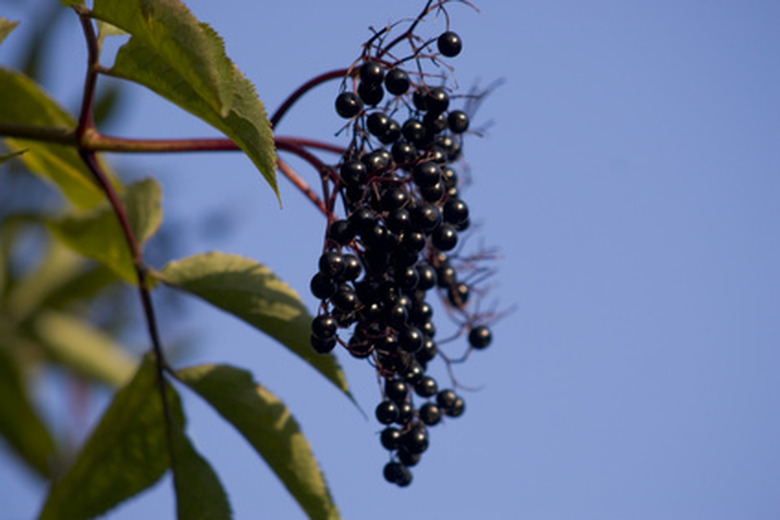Native Idaho Shrubs With Berries
Idaho, a leading potato-producing state, has four distinct growing regions, each with its own soil types, growing season and climate. The state covers USDA Hardiness Zones 2–with winter temperatures dropping as low as -45 degrees F–through 7, where they seldom fall below zero. Growing Idaho native shrubs with berries successfully depends on finding those hardy in your area of the state. They range from shrubs standing up to 30 feet high to those that work well as ornamental ground covers.
Saskatoon Serviceberry
Saskatoon serviceberry (Amelanchier alnifolia) is a member of the rose family hardy throughout Idaho. Normally standing 3 to 18 feet high and occasionally reaching 30 feet, this shrub produces abundant clusters of small fragrant white flowers between April and June. Its sweet, edible bluish-purple berries are ripe by early summer, allowing plenty of time for harvesting before frost. Saskatoon serviceberry's pale green leaves make a long-lasting red or orange autumn display.
- Idaho, a leading potato-producing state, has four distinct growing regions, each with its own soil types, growing season and climate.
- Its sweet, edible bluish-purple berries are ripe by early summer, allowing plenty of time for harvesting before frost.
The shrubs grow wild along Idaho's streams and hillsides. Birds and wildlife shelter in their branches and feed on their berries. The berries also make excellent preserves, pies and puddings. Plant Saskatoon serviceberry in sun to shade and well-drained soil. It's not fussy about pH or soil type, but benefits from additional watering during drought. Shrubs in organically rich soil will grow taller.
Twinberry Honeysuckle
Twinberry honeysuckle (Lonicera involucrata) is a showy perennial shrub capable of surviving at elevations of 10,000 feet. Normally growing between 3 and 8 feet, it has glossy green leaves and small tubular flowers that change from golden yellow to purple as they age. Shrubs, depending on their locations, bloom sometime between April and August.
- The shrubs grow wild along Idaho's streams and hillsides.
- Normally growing between 3 and 8 feet, it has glossy green leaves and small tubular flowers that change from golden yellow to purple as they age.
Attractive red bracts containing black berries follow the flowers. They're a food source for birds and bears. Plant twinberry honeysuckle in sun to shade and moist soil. This pollution-tolerant shrub will bring hummingbirds and butterflies to your garden.
Creeping Oregon Grape
A low shrub reaching up to 3 feet, creeping Oregon grape (Mahonia repens) belongs to the barberry family. It grows wild on dry hillsides and in open woods, loves cool summers and is one of the rare ground covers that performs in shade.
A spreading evergreen, creeping Oregon grape has drooping clusters of fragrant yellow spring blooms attractive to butterflies and bees. Its soft blue-green foliage, interspersed with pink and orange leaves, takes on purple and rust tones in winter. Birds feed on the vivid purple berries that follow its flowers. Plant this shrub where it will be protected from high summer heat and drying wind. It likes part shade and slightly acidic soil. Sandy, loamy or chalky organically rich soils are best.
- Attractive red bracts containing black berries follow the flowers.
- A spreading evergreen, creeping Oregon grape has drooping clusters of fragrant yellow spring blooms attractive to butterflies and bees.
